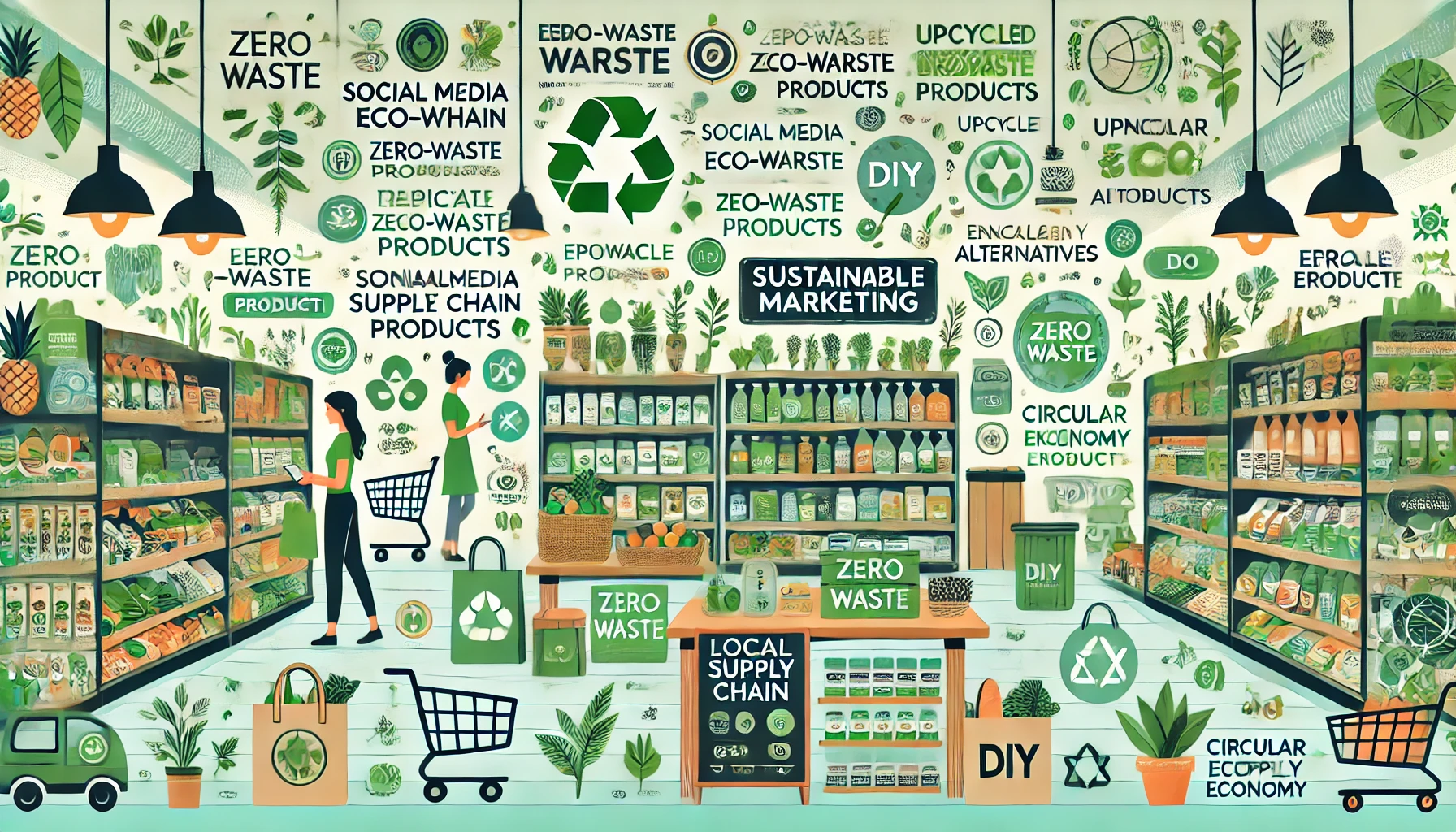
Imagine walking into your favorite grocery store, the familiar scent of fresh produce mingling with the crisp air. But this time, something feels different. As you stroll through the aisles, you notice subtle changes. Shelves lined with eco-friendly packaging, signs promoting ethically sourced products, and even a section dedicated entirely to zero-waste items. It’s as if the store has undergone a quiet revolution overnight. This transformation isn’t just a random change; it’s the result of a powerful force reshaping the way we shop—sustainable marketing.
Sustainable marketing has become more than just a buzzword; it’s a movement that’s influencing consumer behavior in unexpected ways. It’s the reason why you’re now opting for a reusable bag without a second thought, or why that organic coffee brand has become your go-to choice. But how exactly did this happen? How did sustainable marketing subtly weave its way into our daily lives, changing our shopping habits in ways we never anticipated?
In this blog post, we’ll explore ten surprising ways sustainable marketing has shaped shopping habits. From the rise of green packaging to the influence of social media eco-warriors, we’ll delve into the fascinating world of sustainability and its impact on our purchasing decisions. So, grab your reusable coffee cup, sit back, and join us on this journey through the green revolution in marketing.
1. The Rise of Green Packaging: Remember the days when packaging waste filled up your trash can faster than you could take it out? Sustainable marketing has revolutionized packaging, making it more eco-friendly. Companies are now opting for biodegradable, recyclable, and even reusable packaging materials, reducing the environmental footprint and influencing consumers to make greener choices.
2. The Allure of Ethical Brands: Consumers are increasingly drawn to brands that prioritize ethical practices. Whether it’s fair trade coffee or cruelty-free cosmetics, sustainable marketing has highlighted the importance of ethical sourcing and production. This shift has led to a growing preference for products that align with personal values.
3. The Influence of Social Media Eco-Warriors: Social media has given rise to a new breed of influencers—eco-warriors. These passionate individuals use their platforms to promote sustainable products and practices, inspiring their followers to adopt more environmentally friendly shopping habits. Their authentic endorsements often carry more weight than traditional advertising.
4. The Popularity of Minimalist Lifestyles: Sustainable marketing has tapped into the minimalist movement, encouraging consumers to buy less but buy better. This shift towards quality over quantity has led to a preference for durable, long-lasting products that reduce waste and promote a more sustainable lifestyle.
5. The Appeal of Local and Organic: Local and organic products have gained immense popularity, thanks to sustainable marketing efforts. Consumers are now more inclined to support local businesses and choose organic options, driven by the desire to reduce their carbon footprint and support sustainable agriculture.
6. The Trend of Upcycling and DIY: Sustainable marketing has sparked a trend of upcycling and DIY projects. People are now more likely to repurpose old items or create something new from discarded materials, reducing waste and fostering a culture of creativity and sustainability.
7. The Impact of Transparent Supply Chains: Transparency in supply chains has become a crucial aspect of sustainable marketing. Consumers want to know where their products come from and how they are made. Brands that provide this information build trust and loyalty, influencing purchasing decisions.
8. The Growth of Plant-Based Alternatives: The rise of plant-based diets is another surprising outcome of sustainable marketing. Promoting the environmental and health benefits of plant-based foods has led to a surge in demand for meat alternatives, changing dietary habits on a global scale.
9. The Emphasis on Energy Efficiency: Energy-efficient products have become a staple in sustainable marketing campaigns. From energy-saving appliances to eco-friendly transportation options, consumers are now more aware of their energy consumption and seek products that help them reduce it.
10. The Adoption of Circular Economy Principles: Finally, sustainable marketing has introduced the concept of the circular economy, where products are designed for reuse, recycling, and regeneration. This approach encourages consumers to think beyond the lifecycle of a product, fostering a more sustainable and responsible shopping mindset.
Conclusion:
As you finish your shopping trip, reusable bag in hand, you can’t help but feel a sense of satisfaction. The small changes you’ve made, influenced by sustainable marketing, contribute to a larger movement towards a more sustainable future. These ten surprising ways sustainable marketing has shaped shopping habits are just the beginning. As brands continue to innovate and consumers become more conscious, the impact of sustainable marketing will only grow stronger, leading us towards a greener, more sustainable world.
Leave a Reply